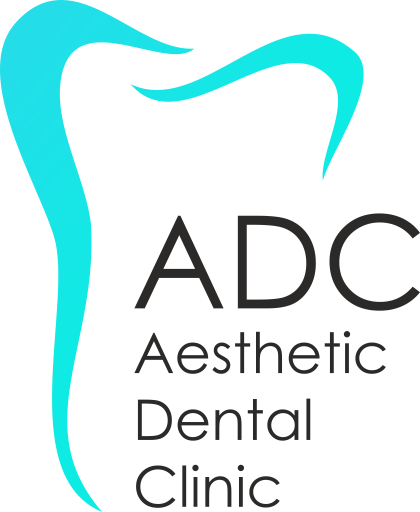Contents
Teeth whitening
Want a whiter, brighter smile?
What is tooth whitening?
Whitening is the change of the color of the natural teeth to the brightest and whitest, which is done only by the dentist with various techniques.
Teeth whitening techniques
- Bleaching at home by the patient, but always with the supervision of a dentist. In this technique, the dentist manufactures two personalized splinters of very thin transparent plastic material that apply as a glove on the teeth, one for the upper jaw and one for the lower jaw. It is given to the patient along with the whitening medication, and depending on the peroxide content of the drug, patients may use it 1 hour a day or twice a day for half an hour each time, even at night. All this has to do with how discolored the teeth are, the patient’s sensitivity, how fast the patient wants to have white teeth and other factors. This is why you always need the supervision and guidance of a dentist. The bleaching gels used in this case are hydrogen peroxide and carbamide peroxide with a content of 3% – 20%. Generally, the longer you hold a strong material in your teeth, the more white they will become. However, this should not be the case with dental whitening, because the higher the percentage of peroxide in the bleaching gel, the shorter the stay in the teeth should be, as holding the gel for longer will lead to dehydration and increase teeth sensitivity.
- Whitening at the dental office by the dentist. It is as effective as the previous one, but it is done in less time. It takes one or two sessions within 10 days of each other. Each session lasts one to one and a half hours. One of the benefits of whitening in the office is that the dentist checks all the teeth and sees if they really need whitening or not, examines whether the discoloration and stains are due to stains and not tooth decay or other more serious problems requiring other types of treatment. . The Dentist checks for spots that should not be whitened and protects them to avoid hypersensitivity and pain later on. Whitening of this type is done by activating the gel with some light source, such as plasma, Led and laser, or by activating the gel chemically without a light source. The bleaching gels used in this case are hydrogen peroxide and carbamide peroxide with a content of 15% – 45%.
- Mixed bleaching in the dental office and at home. This bleaching method is usually used in difficult and demanding cases, with intense discoloration and in patients with high aesthetic standards.
Which teeth are bleached?
- Vital
- Non- vital
- Endodontically treated
How does tooth whitening work?
Bleaching is done by applying some bleaching gels on the teeth. It affects the brightly colored organic molecules that appear between the enamel hydroxyapatite crystals or the boundary between enamel and dentin and degrade them, thereby removing them from the enamel. It is these organic molecules that give the teeth a stained appearance.
For superficial staining of teeth, apply the bleaching gel for 30 to 60 minutes on the surface of the tooth.
However, for deep stains starting from the inside of the tooth, such as in the case of non-vital or decayed teeth, the bleaching gel has to be inserted into the pulp chamber and the root canal several times, that is, the tooth should be opened and the material placed inside. This should be repeated two or three times a week. The bleaching process continues until these organic molecules are completely discolored.
The whitening process works best and whitens the teeth when the pigments are yellow or brown. When the teeth are gray, they are difficult to bleach.
Can I eat and drink what I want during whitening?
It is advisable to avoid certain foods during the bleaching process that have many pigments. These foods are black tea and in general beverages, coffee, energy drinks, red and white wine, soy sauce, balsamic vinegar, cola soft drinks, and finally red fruits and vegetables, such as cherries, strawberries, black berries, red grapes etc.
Is bleaching painful?
Bleaching is mostly a painless process, but sometimes teeth sensitivity can be created because they can be corroded, have exposed roots, have deep and many cracks, and at times some patients have very sensitive teeth.
Many times patients use the gel for more than the accepted time, not following the dentist’s instructions or putting too much gel on the splints they use in the bleaching process at home, resulting in gum sensitivity. Then what can be done from the patient is to take a painkiller, to interrupt the procedure for a couple of days or to reduce the concentration of the bleaching agent and to consult a dentist in general.
Will the white dental fillings, crowns and bridges on my teeth whiten whiten?
Bleaching is a process that only concerns the natural human teeth, so anything artificial, such as dental fillings, bridges, crowns, is not affected by the bleaching agent at all. This is why it is best to whiten the teeth first and then replace the old dental, bridges and crowns based on the color of the natural teeth.
Will bleaching wear my teeth?
No, whitening does not harm the dental tissues once an experienced dentist has followed the whitening protocol. Research to date has shown that it is a safe and harmless method for teeth, as long as teeth and gums are healthy. In general, whitening is a safe process because the chemicals used to neutralize the chromogenic organic molecules do not substantially affect the structure of the tooth itself. Only some minor side effects can occur, such as some tooth sensitivity, but this is also overcome because the dentist takes care of both the exposed root and gum as well as very worn teeth which dentin is uncovered by enamel.
– Follow the dentist’s instructions strictly.
– Do not exaggerate either the amount, because it burns in the gums, or the duration of bleaching, as you may overly dehydrate the enamel and thus become chalky and can become crumbly.
Can my teeth not be whitened?
In very few cases the teeth can be whitened by only one tone and no more. These cases are:
- Teeth with intense shades of gray
- Non-vital teeth after injury
- Teeth endodotically treated many years ago
How many days does the bleaching process take?
The whitening technique in the dental office takes one to one and a half hours. The technique of whitening at home lasts from about 15 days to about 30. The procedure, of course, depends on how discolored the teeth are, what the patient’s aesthetic requirements are and how sensitive the teeth are. Generally, the darker the color of the teeth and the higher the patient’s expectations, the longer the bleaching time.
How long does the bleaching effect last?
Ideally one could say that a tooth whitening can last from six months to three years. This will depend on his eating habits, how heavy a smoker the patient is, and how often he visits the dentist.
How can I have a white smile for many years?
To do this, every six months you need the regular checkup, of teeth cleaning and polishing, if necessary by the dentist and the patient, should give additional bleaching gel for some days so that they can be keep the white smile for years. Whitening toothpaste and mouthwash, avoidance of pigments through food and beverages, and avoidance of smoking are also helpful in maintaining whitening.
How many days will I see the first results?
After bleaching in the office the results are immediate. With bleaching at home the first results appear after day 3 to day 5.
Can I smoke during whitening?
The answer is no if we want the best result during whitening. If not, then the less the better. But one might not smoke the whole cigarette but smoke 1/3 of the cigarette. He could also smoke 5 cigarettes a day rather than 10. Another thing one could do immediately after the cigarette was to rinse his mouth with 1 glass of water. You can also do the whitening after you smoke your last cigarette and brush your teeth before going to bed.
Do toothpaste bleaches and breaks help to whiten?
They help in the sense that they remove dental plaque and pigments from the teeth, which are on food and beverages. That is, their action is superficial and not inside the tooth, which is what bleaching does, they contain tiny granules and by rubbing with the toothbrush they smooth the outer surface of the tooth. They also contain chemicals, but they do not last long in the teeth, as a brush only lasts a few minutes and this is not enough time for the teeth to whiten. Using a mouthwash does not help with bleaching. However, patients using mouthwash should avoid those that contain chlorhexidine because it stains the teeth.
How much does a tooth whitening cost?
The cost of whitening depends on its duration, the materials to be used, and its technique. In general, whitening is an affordable procedure with spectacular results compared to other cosmetic procedures.
When are teeth whitening prohibited?
Natural teeth whitening should not be performed on persons under 18 years of age during pregnancy and lactation. There are also some tooth discolorations that are so intense and so deep in the tooth cannot whiten. In this case is not that you are forbidden to whiten your teeth, but no matter how hard you try, this type of teeth will not whiten.
I want my teeth spotless white. Can I;
It goes without saying that whitening can not solve all the problems that your teeth have. Whitening is an aesthetic method that restores the teeth to their natural color, removing the discoloration and stains that have been deposited over time from everything we eat and drink, so depending on the type of teeth each person will have and the appropriate whitening. Miracles do not happen.
The 16 Secrets You Must Know Before Bleaching
- You must be over 18 years of age.
- You should not be pregnant or breast-feeding.
- You should quit smoking or at least reduce it during whitening and for three days thereafter. Tip: you can make the last cigarette after dinner, brush your teeth and whiten before going to bed.
- You should cut or at least reduce your consumption of coffee, red wine, white wine, cola soft drinks, herbs such as black tea, chamomile, natural juices, black berries, beetroot strawberries, cherries, red sauces, soy sauce, vinegar during whitening and one week thereafter. Tip: Use a straw to drink all the above drinks.
- The bleaching should be done one month after the end of the orthodontic treatment.
- The white seals already present in the front main teeth should be replaced after bleaching because they do not change color, so they will remain in their original color, that is, darker than the whitened natural teeth.
- Any prosthetic work (crowns and bridges) present mainly on the front teeth should be replaced after the teeth are whitened, as the teeth whiten only the natural teeth and not the artificial teeth.
- When laser whitening is done, smoking is stopped from the day of bleaching until three days after.
- You can always use pharmaceutical toothpaste and bleaching solutions for daily oral hygiene, always at the dentist’s instructions.
- You should use a dental floss daily or a toothbrush. This applies both before and after bleaching.
- Patients with severe periodontal problems with large cracks, fractures, and numerous seals on all front teeth are not the most suitable for bleaching.
- People with poor oral hygiene, whose teeth are full of stone, pigment and dental plaque need no bleaching but cleaning.
- Bleaching does not last for a lifetime. Dentist should be regularly consulted by the dentist, as it all depends on the type of foods, drinks and the number of cigarettes smoked.
- Injured and decayed dead teeth usually do not whiten with the traditional whitening methods. Also teeth with a deep shade of gray and teeth with tetracycline staining and fluorescence.
- Don’t have excessive expectations with teeth whitening. What we achieve is simply to remove some pigments through the enamel of the tooth and lighten the teeth and smile a little. The whitish smile of movie stars can only be achieved with prosthetic tasks such as porcelain or resin (veneers, bonding), hoops and bridges.
- Follow the dentist’s instructions strictly. Do not exaggerate in quantity, because burns occur in the gums and in practice you waste the whitening material and you extend the whitening period, the enamel can become excessively dehydrated, so that it will look and feel pale and crumble, resulting in the erosion of the teeth.




